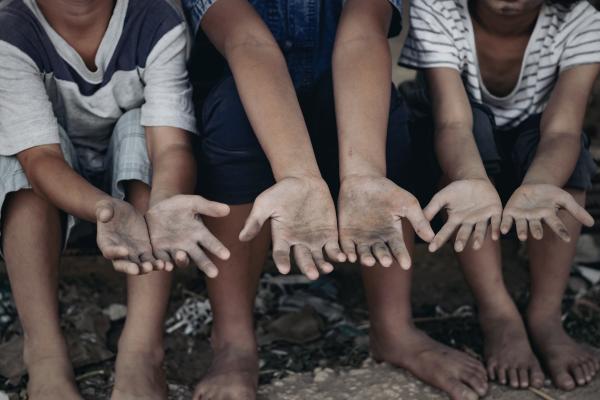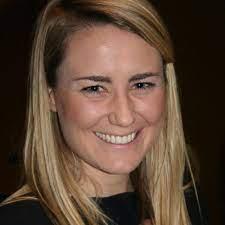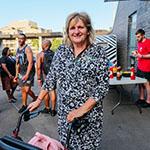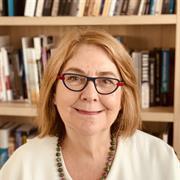
Professor Jennifer Burn AM has been the Director of Anti-Slavery Australia for 20 years. Day in, day out, she works alongside other researchers, educators and lawyers to eradicate modern slavery in all its forms.
When it comes to matters of human exploitation, Professor Burn has seen it all — but even she struggled with the emotional impacts of her latest project, Seeking Freedom.
With support from a UTS Social Impact Grant, this first-of-its-kind initiative seeks to protect the rights of children who may be in or at risk of modern slavery.
“What we're hoping to do through this project is to develop an evidence-based framework that specifically focuses on safeguarding the rights of children in the context of modern slavery,” Professor Burn says.
“Currently, there’s no child-specific framework that exists at a state, territory or national level that brings together all the players. That is a huge gap.”
Protecting the rights of children in or at risk of modern slavery
A policy framework would guide the development of state, territory and national policies designed to prevent modern slavery and its impacts on children.
“Our key objectives include increasing the identification of children subject to human trafficking, slavery and slavery-like practices and developing a better understanding of, and ability to meet, the needs of child victim-survivors of modern slavery in Australia,” says Cassandra Bourke, Project Lead for Seeking Freedom.
The term ‘modern slavery’ is used to convey that slavery today looks different to that of the past — today, modern slavery includes servitude, human trafficking, forced marriage and debt bondage.
Modern slavery is everywhere, but the vast majority remains hidden — in Australia, research from the Institute of Criminology shows that only 1 in 5 people who experience slavery are ever detected.
“Some people say modern slavery is hidden in plain sight,” Professor Burn says.
“We know that people can be enslaved in a commercial kitchen or in a retail outlet or in a private home. These are people who are seen by others who largely don’t realise that they’re witnessing a form of slavery.”
Children are particularly vulnerable to the threat of slavery and exploitation. In part, this is the result of a fragmented public service system in which key stakeholders, including agencies and frontline service providers, operate in siloes and may have limited understanding of the signs and risk factors of exploitation. Compounding the challenge is a lack of coordination and cross-sector collaboration, coupled with non-existent national child rights legislation.
Building national anti-slavery networks
To address these challenges, Professor Burn, Ms Bourke and their colleagues are working closely with key stakeholders from government, academia, civil society and community, which they believe is key to the success of the future policy framework.
“We need to establish meaningful connections across Federal Government and the states and territories, and also the NGO sector. It’s a massive project,” Professor Burn says.
Over the last 12 months, they’ve completed a series of four roundtables with these stakeholders that provide a starting point for the framework’s development. Each roundtable was focused on one key aspect of a child-specific modern slavery response: prevention, identification, protection and participation.
These consultations confirmed the lack of national coordination and cross-sector collaboration and revealed an absence of data to support a more robust policy response.
But they also kickstarted a vital conversation about child trafficking and slavery in Australia and the roles and responsibilities of those who have the power to turn the tide on this egregious crime.
“The process of having the roundtables has drawn attention to the issue within key sectors,” Professor Burn says.
“We’ve raised awareness, and I think we’ve developed a shared understanding with sector groups about the issue of child survivors of modern slavery and the fact that they are a lot less likely to be identified.”
Towards a policy framework
In November 2023, the research team presented the project to the United Nations’ Special Rapporteur on the sale, sexual exploitation and sexual abuse of children.
This engagement highlighted the necessary work required to protect the rights of Australian children in or at risk of modern slavery and shone a spotlight on Seeking Freedom as an important step towards a solution.
The next step of the work will be producing a policy and guidance paper that captures the key findings from the stakeholder consultations and articulates a path forward towards a national policy framework.
A suite of co-developed resource materials, including practical advice for frontline workers and an advocacy campaign, among others, is also on the 2024 agenda.
“It’s evident that Australia’s current response to children in the context of modern slavery could be strengthened,” says Ms Bourke.
“By directly engaging with stakeholders that are best placed to prevent, identify and protect children in or at risk of modern slavery in Australia, Seeking Freedom has enormous potential to ensure the rights of children are safeguarded and upheld.”
The problem
Children are particularly vulnerable to the threat of slavery and exploitation. A lack of coordination and cross-sector collaboration between civil society and governments, as well as limited awareness of the extent, risk factors and warning signs of exploitation among key stakeholders and the public at large, means that many children experiencing or at risk of modern slavery continue to fall through the cracks.
The response
Researchers at Anti-Slavery Australia will develop a national policy framework to protect child victims and survivors of modern slavery, as well as those at risk. Over 12 months, the research team held a series of roundtables with key stakeholders from government, academia, civil society and community to discuss the challenges of modern slavery and identify its systemic enablers.
What helped accomplish this?
An expert Steering Committee guided this work. Members have extensive expertise in child rights and protection, youth engagement and modern slavery in Australia. Between August 2022 and February 2023, they participated in four meetings to discuss, design and evaluate the consultation framework that shaped the roundtable discussions.
What has changed as a result?
To date, Seeking Freedom has pinpointed the key challenges involved in safeguarding the rights of children in the context of modern slavery amongst key sectors. A preliminary report has been presented to the United Nations’ Special Rapporteur on the sale, sexual exploitation and sexual abuse of children and the Seeking Freedom project has facilitated professional networks that will be key to the success of a future policy framework.
Download full case study
Team members
-
Professor Anti-Slavery Australia
-
 Cassandra BourkeProject Lead (Seeking Freedom) | Anti-Slavery Australia
Cassandra BourkeProject Lead (Seeking Freedom) | Anti-Slavery Australia -
 Aunty Glendra StubbsElder-in-Residence
Aunty Glendra StubbsElder-in-Residence


